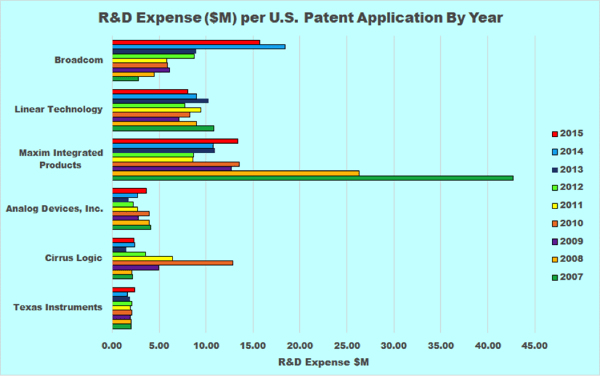
In our last installment, we discussed the absolute and relative spend on research and development, and how Boards should certainly be sure to keep watch over these expenditures.
Now, relative R&D spend isn’t the only information you should take into account when determining if your output is appropriate. Next, you’ll consider whether the amount spent on R&D is resulting in new inventions. A measure of this is the ratio of R&D spend to the number of patent applications filed per year. As a first pass, you should look at the number of applications filed per year and not the number of patents issued.
There are two reasons for starting here: (1) the amount of time from filing to patent grant can vary greatly (two to four years is typical for many technology areas) and (2) not all applications result in issued patents as a result of the patent examination process, prior art, etc.
By looking at patent applications filed, you can see whether your invention disclosure and capture process is working, especially when compared to peer companies. For example, the company that gets one application per $1m in R&D is arguably more efficient than the company that gets one application per $2m in R&D, all other factors being equal.

A few observations on this chart are in order.
- First, the three companies at the bottom of the chart (Analog Devices, Cirrus Logic and Texas Instruments) have relatively consistent and relatively low R&D expense for each US patent application filed.
- Maxim Integrated files relatively few US patent applications per R&D dollar expenditure. Is this because there are fewer innovations or because of the way their patenting process works?
- Broadcom, in 2014 and 2015, had a jump in R&D expense per patent application, possibly suggesting new research fields being undertaken. A similar question could apply to Maxim in 2007 and 2008.
If new fields of research increase the amount of R&D dollars spent in relation to the patent applications for that year, it’s not necessarily a bad thing. The important takeaway is to keep a close eye on that line of research to ensure it doesn’t become so unwieldy that you find, years later, that your ratios have fallen out of balance.
That new line of research should follow through later with additional patents to justify, in a sense, the expense of your research. Those patents should then lead to new products, which we’ll explore in our next installment.


